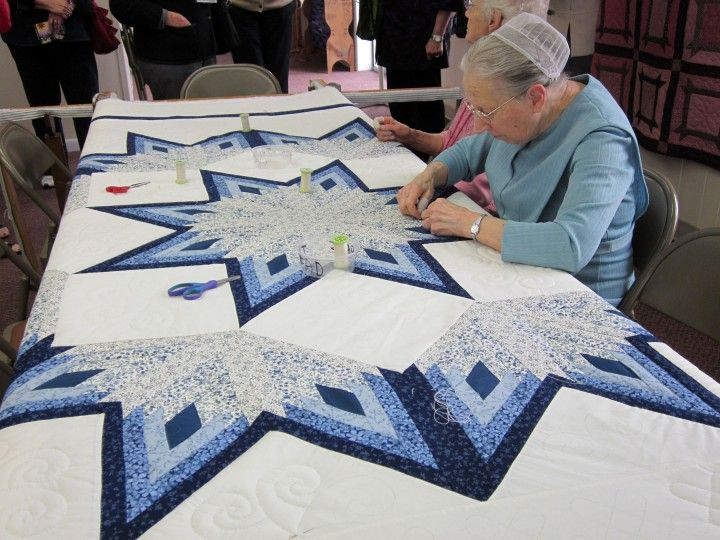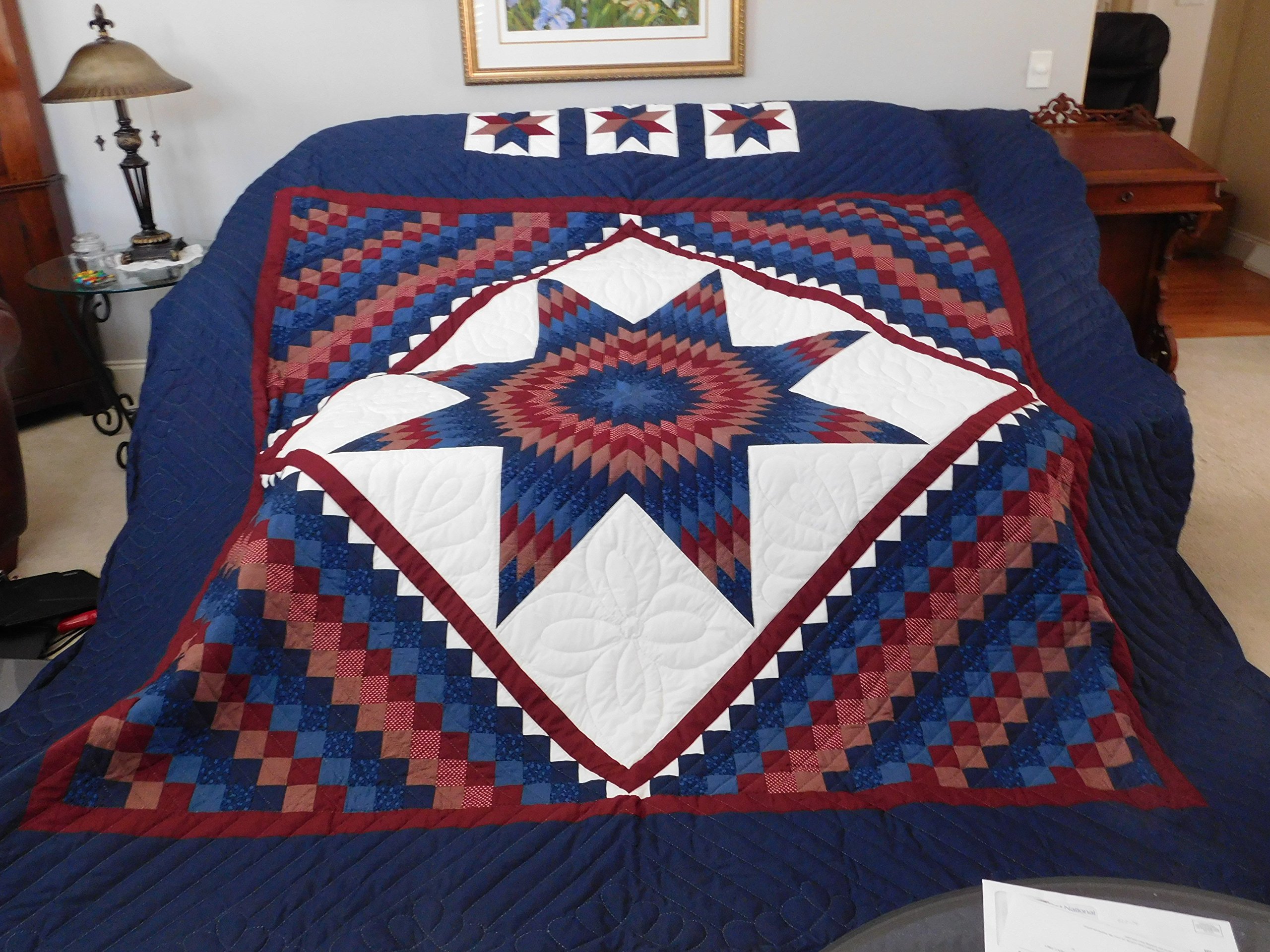A vibrant tradition thrives among the Amish communities – the art of quilting. This centuries-old practice is more than just a craft; it reflects Amish values, history, and way of life. Amish quilts are renowned for their striking geometric patterns, bold colours, and exceptional craftsmanship. These intricate works of art serve practical and cultural purposes, warming beds and hearts while preserving a rich heritage.
Distinctive features of amish quilts
What sets Amish quilts apart is their unique combination of simplicity and complexity. The designs typically feature bold, solid-coloured fabrics arranged in striking geometric patterns. Unlike many other quilting traditions, Amish quilts rarely incorporate prints or figurative designs. This adherence to abstract patterns reflects the Amish belief in humility and rejecting vanity.
Common patterns include the Diamond in the Square, Bars, Nine Patch, Sunshine, and Shadow. These designs often create optical illusions, with dark and light fabrics carefully balanced to produce a sense of depth and movement. The colour palette traditionally consists of deep, rich hues – navy blues, deep purples, forest greens, and burgundies – contrasted against black backgrounds.
Quilting process

Creating an Amish quilt is a meticulous process that begins with selecting a pattern and fabrics. The quilt top is pieced together using tiny, precise stitches—a hallmark of Amish craftsmanship. Once the top is complete, it’s layered with batting and a backing fabric.
The actual quilting—the stitching that holds all three layers together—is where Amish quilters truly showcase their skill. Intricate patterns of feathers, curves, and geometric shapes are stitched by hand, creating a textured surface that adds depth and interest to the quilt. Because of the size and complexity of the design, this process can take months to complete.
Traditions in modern times
While Amish communities strive to maintain their traditional way of life, their quilting practices remain unchanged. Over the years, some changes have been embraced, such as brighter colours and more diverse patterns. However, simplicity, quality, More hints of craftsmanship, and community remain at the heart of Amish quilting.
Today, Amish quilts are highly sought after by collectors and enthusiasts worldwide. This demand has led to a thriving cottage industry in many Amish communities, an essential source of income. However, this commercialisation has also raised concerns about preserving these quilts’ authenticity and cultural significance.
Social aspect of quilting
Quilting is more than an individual pursuit in Amish communities—it’s a social activity that strengthens community bonds. Quilting bees are everyday events where women gather to work on a quilt together. These gatherings provide opportunities for socialising, sharing knowledge, and down traditions from generation to generation.
They begin learning to quilt around age seven, starting with simple tasks like threading needles or cutting fabric. As they grow older, they take on more complex aspects of quilt-making, eventually creating masterpieces. This process of learning and teaching ensures the continuity of Amish quilting traditions.
Museums and cultural institutions are crucial in preserving and showcasing Amish quilts. Many have collections that document the evolution of Amish quilting over time, helping to educate the public about this rich cultural heritage. Amish quilting traditions have left an indelible mark on the broader world of textile arts. Their distinctive style has inspired countless quilters and artists, influencing modern quilt design and abstract art.

















